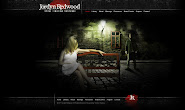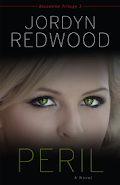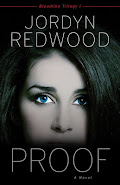Amy is visiting and Dianna Benson (EMS expert) and myself (ER nurse extraordinaire) are going to tackle her question. Dianna will be today and I'll be Friday.
 Amy asks: I am putting one of my characters in a
pretty major car accident -- a rollover in which she lands on a broken window
and ends up with a lacerated back full of broken glass, in addition to a broken
leg, fractured ribs, etc. I need a scene to take place in the hospital where
she is recovering. With those kinds of injuries, what treatments would she be
under? More importantly, how exactly would she be laying in the bed? Obviously
not on her back. But would she be on her side or stomach? Perhaps that depends
on the other injuries she sustains... but the lacerated back is the biggest one
I want her to have.
Amy asks: I am putting one of my characters in a
pretty major car accident -- a rollover in which she lands on a broken window
and ends up with a lacerated back full of broken glass, in addition to a broken
leg, fractured ribs, etc. I need a scene to take place in the hospital where
she is recovering. With those kinds of injuries, what treatments would she be
under? More importantly, how exactly would she be laying in the bed? Obviously
not on her back. But would she be on her side or stomach? Perhaps that depends
on the other injuries she sustains... but the lacerated back is the biggest one
I want her to have.
Dianna Says: The story and the characters are first
priority, so I’ll make the medical aspects fit into what you’ve explained.
Since it sounds like you don’t have an EMS scene at all (no scene where rescue
crews—EMS and fire—are present), it keeps it simple from my end, but I’ll give
you pertinent background on what I’d do if I were the EMS crew on your scene.
Also, based on the MOI (mechanism of injury) you described, I’ll explain what
type of injures are possible. Every patient is different, every MVC (motor
vehicle collision) is different, and every rollover is different, so that
definitely gives you leeway.
First of all: I like the scenario: Your character
runs a red light causing another car to slam into hers, which causes it to spin
then roll over while her back is dragged on the asphalt over the broken window.
I also like the adding of a boyfriend; yes, he’d definitely worsen her injures
by landing on her, so have him either land elsewhere inside the car or just
have him belted in (unless you want her seriously injured to the point she’s
in-hospital for a long while and possibly suffering with lasting effects). Just
so you know: The reason for the seatbelt law is not just to protect the person
wearing the seatbelt; it’s to protect others from being struck by that person
propelling in the air (inside and outside of vehicles) like a weapon. Just a
thought -- if she landed on the driver window and it's a rollover, then the car
is on its side (driver side) upside down, right? Make sure you're clear about
that.
Any rollover is a high index of suspicion of injury;
meaning, severe injuries and death likely. You have two separate impacts in
this story: 1) Smash from the other car 2) Rollover. Therefore, you have two
separate MOI’s and both cause different injuries.
Since fiction is about the story and the characters,
make the speed of the car fit; meaning, if you want your character(s) to be
seriously and extremely injured, keep the speed high. For a character who is
injured and needing in-hospital care (not just on-scene EMS treatment and ED
treatment) yet doesn’t sustain any life lasting effects or long term damage,
then keep the speed down low.
Possible injuries for both the side impact and the rollover: Again, every patient and incident is different, and I’ve seen it all—some accidents where based on the MOI patients surprisingly die and some where patients surprisingly live.
Possible injuries for both the side impact and the rollover: Again, every patient and incident is different, and I’ve seen it all—some accidents where based on the MOI patients surprisingly die and some where patients surprisingly live.
1)
Whiplash: back and neck
2) Air bag deployment: facial injures (soft tissue), labral tear (shoulder), etc.
3) Seat belt injures (chest injuries, labral tear, etc.)
4) Head injures
5) Anything flying around inside the vehicle and hitting her and boyfriend
6) Other possibles: knee ramming into door and shattering patella, elbow ramming into steering wheel, shoulder striking window., etc. etc.
7) Fractured femur or fractured tib/fib or just one of them (tibia or fibula) from twisting or hitting, etc.
8) Fractured hips
9) Fractured ribs
10) Etc. Etc. Etc.
A fracture is the medical term for broken bone.
Assuming the patent is unconscious when I arrive on scene, I’d verify she has a pulse and is breathing efficiently. If so, then I’d control all bleeding via wound care—sterilization and bandaging. I’d strap a C-collar (cervical collar) around her neck then extricate her from the vehicle onto a back board with padded blocks holding her head in place and strapped to the board. I’d splint any dislocations or suspected fractured (I don’t have x-ray vision) if not properly splinted via backboard. We do a ton of medical treatments and monitoring, but I won’t blah, blah, blah it all, especially since you don’t have an EMS crew on your scene.
2) Air bag deployment: facial injures (soft tissue), labral tear (shoulder), etc.
3) Seat belt injures (chest injuries, labral tear, etc.)
4) Head injures
5) Anything flying around inside the vehicle and hitting her and boyfriend
6) Other possibles: knee ramming into door and shattering patella, elbow ramming into steering wheel, shoulder striking window., etc. etc.
7) Fractured femur or fractured tib/fib or just one of them (tibia or fibula) from twisting or hitting, etc.
8) Fractured hips
9) Fractured ribs
10) Etc. Etc. Etc.
A fracture is the medical term for broken bone.
Assuming the patent is unconscious when I arrive on scene, I’d verify she has a pulse and is breathing efficiently. If so, then I’d control all bleeding via wound care—sterilization and bandaging. I’d strap a C-collar (cervical collar) around her neck then extricate her from the vehicle onto a back board with padded blocks holding her head in place and strapped to the board. I’d splint any dislocations or suspected fractured (I don’t have x-ray vision) if not properly splinted via backboard. We do a ton of medical treatments and monitoring, but I won’t blah, blah, blah it all, especially since you don’t have an EMS crew on your scene.
****************************************************************
After majoring in communications and a ten-year career as a travel agent, Dianna left the travel industry to earn her


















Thanks for posting this. I feature a car accident in my next book - and I once flipped a jeep on the interstate. It wasn't a complete roll-over. The jeep spun 180-degrees and started down the road backwards. We hit the lojacs between the lanes and flipped up on the driver's side. It slid backwards about 100 feet. I walked away with a strip of "road rash" on one arm and an unbelievable adrenaline rush. My friend in the passenger seat was left hanging from her seatbelt, and she waited for me to crawl out the back before she released it. Sprang her back when she fell, but was otherwise unhurt. Lucky, both of us, that no one hit us.
ReplyDelete